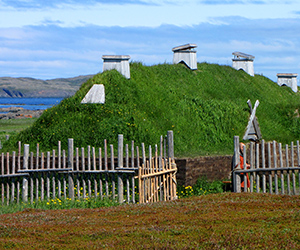CANADA HISTORY - DOCUMENTS EMPIRE
Proclamation of Arms November 21, 1921
Analysis of the Document - (The Document follows below the Analysis)
The Proclamation of Arms on November 21, 1921, by King George V officially introduced a coat of arms for Canada, symbolizing the country’s status as an autonomous Dominion within the British Empire. The coat of arms was more than an aesthetic symbol; it represented Canada's unique identity, blending British and French elements to reflect its history and cultural heritage. This event marked a significant moment in Canada's gradual evolution toward full sovereignty, which would culminate decades later with the Statute of Westminster in 1931 and the Canada Act of 1982.
The coat of arms was deliberately designed to emphasize Canada's ties to both Britain and France, the two colonial powers that played the largest roles in its early development. The design incorporated the English lions, the Scottish unicorn, the Irish harp, and the French fleur-de-lis, blending elements of Britain’s historical heraldry with France’s influence in Quebec. This dual heritage reflected not only Canada’s political history but also the broader vision of a bilingual and bicultural nation.
The 1921 proclamation carried deep implications for Canadian nationalism. By formally granting Canada a unique national emblem, the proclamation was a subtle assertion of Canada’s evolving independence from Britain. While Canada remained a part of the British Empire, the new coat of arms symbolized the growing recognition that Canada was a distinct nation with its own identity, culture, and values. This national symbolism played a critical role in uniting the diverse population of Canada, fostering a shared sense of pride and belonging among both its English and French-speaking citizens.
Furthermore, the Proclamation of Arms contributed to Canada's broader efforts to assert its sovereignty on the international stage. As the country moved toward full legislative independence with the Statute of Westminster in 1931, national symbols like the coat of arms helped Canadians to envision themselves as a distinct nation with a unique place in the world. The proclamation reflected Canada's desire for autonomy within the British Commonwealth and its emerging role as a nation that valued both its British heritage and its independent spirit.
The symbolic power of the Proclamation of Arms continues to influence Canadian national identity to this day. The coat of arms remains a prominent symbol in government institutions, legal documents, and public ceremonies, serving as a reminder of Canada's historical roots and its journey toward full independence. The 1921 proclamation laid the foundation for the modern symbols of Canadian sovereignty, and its legacy is deeply intertwined with the story of Canada's gradual emergence as a fully autonomous nation.

"By The King -
A Proclamation Declaring His Majesty's Pleasure concerning the Ensigns Armorial of the Dominion of Canada
George R.I.
WHEREAS We have received a request from the Governor General in Council of Our Dominion of Canada that the Arms or Ensigns Armorial herein after described should be assigned to Our said Dominion. We do hereby, by and with the advice of Our Privy Council, and in exchange of the powers conferred by the first Article of the Union with Ireland Act, 1800, appoint and declare that the Arms of Ensigns Armorial of the Dominion of Canada shall be
Tierced in fesse the first and second divisions containing the quarterly coat following, namely, 1st Gules three lions passant guardant in pale or, 2nd, Or a lion rampant within a double tressure flory- counter-flory gules, 3rd, Azure a harp or stringed argent, 4th, Azure, three fleurs-de-lis or, and the third division Argent three maple leaves conjoined on one stem proper. And upon a royal helmet mantled argent doubled gules the Crest, that is to day, on a wreath of the colours argent and gules a lion passant guardant or imperially crowned proper and holding in the dexter paw a maple leaf gules. And for Supporters
On the dexter a lion rampant or holding a lance argent, point or, flying therefrom to the dexter the Union Flag, and on the sinister A unicorn argent armed crined and unguled or, gorged with a coronet composed of crosses-patée and fleurs-de-lis a chain affixed thereto reflexed of the past, and holding a like lance flying therefrom to the sinister a banner azure charged with three fleurs-de-lis or; the whole ensigned with the Imperial Crown proper and below the shield upon a wreath composed of roses, thistles, shamrocks and lillies a scroll azure inscribed with the motto A mari usque ad mare, and Our Will and Pleasure further is that the Arms or Ensigns Armorial aforesaid shall be used henceforth, as far as conveniently may be, on all occasions wherein the said Arms or Ensigns Armorial of the Dominion of Canada ought to be used.
Given at Our Court at Buckingham Palace, this twenty-first day of November, in the year of Our Lord One thousand nine hundred and twenty-one, and in the twelfth year of Our Reign. God Save the King"
Cite Article : www.canadahistory.com/sections/documents
Source: NAC/ANC, Elgin-Grey Papers



